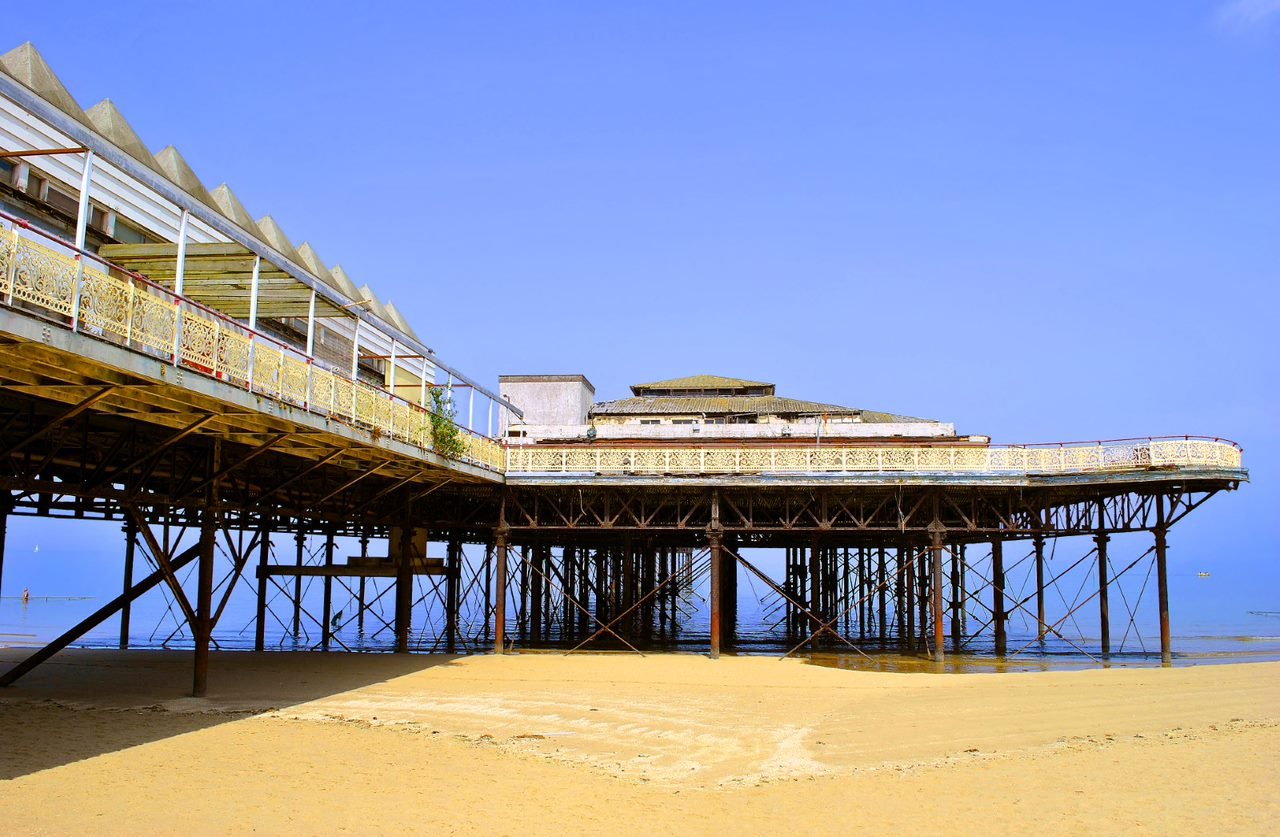
Colwyn Bay Area Guide
Your free guide to Property Investment in Colwyn Bay
Situated in Conwy on the northern coast of Wales, Colwyn Bay isn’t especially large, and it isn’t witnessing billions of pounds’ worth of new inward investment. But what it does have is a well-established tourist industry, ambitious economic plans, and an excellent record of delivering great returns for property investors.
It’s a fine example of a specialist tourist destination, and it illustrates why such markets can hold their own against more headline-grabbing cities such as Manchester, Liverpool and Birmingham.
In our downloadable guide, we’ll explore the various factors influencing the local property investment market, including:
Colwyn Bay – An Overview
Tourism in Conwy
Tourism in Colwyn Bay
Tourist Market Data
Colwyn Bay Sea Front
Regeneration Plans for Colwyn Bay
Economic Growth Targets
The North Wales Growth Deal
National 5-Year Tourism Plan
Colwyn Bay’s Housing Market
Rental Yields
Buy-to-let Investment in Colwyn Bay
Property Market Predictions
Please download your FREE guide to property investment in Colwyn Bay by completing the form below:

Download our free guide to Property Investment in Colwyn Bay
Why Invest in Colwyn Bay?
A Summary
Colwyn Bay is part of a wider borough that represents the second largest concentration of residents in North Wales, and one of its largest business communities. More importantly, it is very much a tourist town and one of the most important in all of Wales.
One of Britain’s most popular tourist destinations
Annual capital gains of 12.6% (February 2021)
A growing domestic population
Limited supply of tourist accommodation
Comparatively affordable property costs
High yields (7%+) on short-stay properties (LiveYield, March 2021)
Good prospects for strong capital growth (Savills: 22.8% by 2025)
Colwyn Bay – an Overview
Colwyn Bay is a popular resort on the northern coast of Wales. Set in Conwy County Borough, it affords access to seaside, coastal paths and, just a little way inland, wild mountain country that makes it popular amongst walkers, climbers, mountain bikers and host of other outdoor enthusiasts.
As such, it is ideally suited to cater for the changing tastes of British holidaymakers. Since the onset of the Covid pandemic and the subsequent lockdowns, there has been a marked resurgence in the ‘Great British Staycation’. People, understandably cautious about the risks of infection in crowded indoor venues, have demonstrated far greater interest in booking holidays that focus on the outdoors and healthy physical pursuits. Conwy has always been a honeypot for country-lovers and its status has only been reinforced by recent events.
Town population: 34,284 (2011 census)
County borough population: 117,203 (2017 estimate)
The second-largest business centre in North Wales
Principal industry: tourism
Value of tourist industry: £900m (pre-Covid)
Tourism-related jobs: over 12,000 (2019)
Tourist Market Data
Economic value by October 2019: £904 million
Visitor numbers: 9.39 million
GVA growth target: over £1 billion
65% of tourism businesses are taking advance bookings (March 2021)
78% of self-catering venues are taking advance bookings
Tourism-related jobs: over 46,000 (Conwy)
Colwyn Bay itself is a key part of this visitor offering. Its beaches are one of its most obvious and popular attractions but the town boasts a host of other entertainments and pursuits.
The 50-acre Eirias Park, host to a sports complex that encompasses the Eirias Stadium and Colwyn Leisure Centre.
The Eirias Events Centre, which provides attractive venues for the public, businesses and clubs. It regularly hosts conferences and banquets, exhibitions, summer balls and concerts, both indoors and out.
The Welsh Mountain Zoo, which normally attracts more than 8 million visitors per annum.
For sports enthusiasts, there are also golf courses, bowling greens, tennis courts, and even an athletics stadium.
Colwyn Bay Sea Front
The town’s sea front ranks top of many visitors’ lists. A great family-friendly resort, Colwyn Bay has over 3 miles of sand and shingle beaches, which are safe, well maintained and flanked by an attractive promenade.
The long curve of the bay tends to be very busy throughout the summer season and during school holidays, but an ambitious programme of developments and investment is now aiming to make Colwyn Bay a year-round attraction.
In June 2019, the Welsh Government reported on some of the most notable improvements to Colwyn Bay’s sea front. In a document entitled ‘Investment in Colwyn Bay is Making a Difference’, it recorded over £2 million of spending on local buildings, together with “a £6.7 million Welsh Government and Conwy Council investment in the waterfront, (which) has helped to improve the promenade as well as beach access.”
The Bay has also benefited from a £16 million scheme that has reduced the risk of flooding and coastal erosion. Later in the same report, the authors state that the “Welsh Government investment in Colwyn Bay is part of its overall Regeneration strategy which has seen investment of over £800 million across Wales since 2014.”
Tourism in Conwy
Before the coronavirus pandemic, North Wales attracted nearly 30 million tourist visitors, making it the most successful tourist destination in Wales.
With its mixed terrain, coastal attractions and a rich array of sports, leisure and outdoor pursuits, Conwy was always destined to capture a large proportion of this buoyant regional market. Indeed, in September 2019, Scarborough Tourism Economic Activity Monitor (STEAM) reported that Conwy had attracted an annual visitor expenditure of £904 million over the course of the last year. This made Conwy “the most visited county in North Wales.”
Major Attractions:
Adventure Park / Surf Snowdonia (a watersports centre with artificial waves)
Conwy Castle (UNESCO World Heritage Site)
Nature reserves (including Conwy Nature Reserve)
Venue Cymru (theatre, conference centre and arena in Llandudno)
Zipworld Fforest (zipwire experience)
Regeneration Plans for Colwyn Bay
In its Economic Growth Strategy, Conwy County Borough Council notes that tourism “has a key role in this strategy, with focus on the development of year-round tourism.” In its Destination Conwy Management Plan 2019 – 2029, it notes:
“Conwy County is Wales’ leading tourism destination, at the heart of which is one of the UK’s top seaside destinations... Year on year our visitor numbers are increasing and the profile of Conwy and North Wales continues to grow.”
The management plan shows a clear intention to keep investing in local infrastructure and amenities. This is all driving towards some important economic growth targets:
Increasing the economic impact of tourism to Conwy County to £1 billion by 2027
Increasing the economic impact per visitor by an average of 3% above inflation for the next 5 years
Increasing the overall proportion of full-time jobs from 59% to 70%
Opening opportunities to support a year-round tourism offering across the county and for businesses in less-visited areas
Encouraging investment, innovation and entrepreneurship across the tourism sector.
Any progress towards these impressive targets should spell fast-improving returns for local property investors. The most obvious benefit would be the increasing visitor numbers, of course, which would directly and immediately boost demand for lucrative short-stay rentals. Those with serviced accommodation or properties aimed at the short-stay market should be particularly well placed to benefit.
The North Wales Growth Deal
All the improvements taking place at the local and county levels are great news for investors, but it’s also important to consider the impacts of a recent agreement signed by the Welsh and UK governments. The North Wales Growth Deal is worth over £1 billion, and will drive the growth of key industries, including tourism.
As the second largest community in North Wales, and home to one of its biggest business clusters, Colwyn Bay should see much of this new expenditure finding its way into the town and its local supply chains. Again, that spells good news for the local property market. It raises the prospect of more jobs, a growing population and more money in the pockets of potential tenants.
It should also increase economic activity more generally, which should mean better returns for large private sector investors, and bigger tax revenues for the local authority. In both cases, that should support and encourage further spending in the area, creating a virtuous circle that would only improve the area’s tourism appeal.
National 5-Year Tourism Plan
Another major public programme that shouldn’t be overlooked is the Welsh Government’s 5-year economic plan for the national tourism industry. It is supported by a £60 million fund for tourism businesses and related organisations.
This includes a special, £10 million scheme to deliver basic small-scale tourism infrastructure improvements. The remaining £50 million takes the form of the Wales Tourism Investment Fund (WTIF), which aims to support sustainable high-quality capital investment projects that deliver “year-round experiences that are good for visitors and host communities.”
This constitutes yet another good reason to believe that Colwyn Bay has a bright future. Locally, regionally and nationally, major schemes are developing that must inevitably have a strong and positive impact on the town’s economy. Visitor numbers are likely to increase and local standards of living should improve in tandem with the town’s rising fortunes.
Colwyn Bay’s Housing Market
Different sources quote different house price data but a general upward trend is clearly evident:
Home.co.uk +35% y/y
Rightmove +26% since 2019
Zoopla +4.01% y/y
The Principality / Wales HPI +13.7% y/y (Conwy)
Demand stems largely from the tourist industry, of course, but there is also rising demand from a growing local population. Like many other popular tourist resorts in the UK, Colwyn Bay lacks new development space, and those new house-building projects that are approved are often met with local hostility. As a result, housing supply is limited.
Local planners and housing associations are building new properties in the area but with so many existing properties dedicated to the short-stay tourism market, a shortfall between supply and demand is always likely to remain. That could maintain upward pressure on prices and, as the tourism market revives in 2022, average values could quickly accelerate.
In absolute cash terms, however, average values are still comparatively low, as the following averages illustrate:
Home.co.uk: £236,493
Rightmove: £233,749
Zoopla, average price paid: £193,316
The Principality: £224,068
To put this in context, the Land Registry notes that the average value of a typical UK property is £251,500. Clearly, then, despite their recent price growth and despite strong tourist demand in a typical season, properties in the town are still affordable. This, together with good rental values, is a recipe for some excellent yields.
Rental Yields
According to LiveYield in March 2021, rental yields in Colwyn Bay averaged at 3.9% across all property types. However, that represents a blend of assured shorthold tenancies (AST) and short-stay rentals – i.e. holiday properties. ASTs typically deliver lower returns and, looking at a mix of property types across the town, it seems clear that well-chosen flats can deliver much better yields. LiveYield found examples of individual flats delivering between 7% and 9%.
Property Market Predictions for 2021 and Beyond
The Covid pandemic will not vanish in 2021. However, the vaccination programme should help to see the ‘R’ rate falling and it should also help to reduce the rates of hospitalisations.
Regardless of the pace of recovery, the foundations of the local rental market remain very strong. Tourist preferences have changed since 2019, and resorts that offer more space and more access to outdoor pursuits look set to stay popular for years to come.
In addition, concerns about conditions overseas, including the risk of viral mutations and lengthy quarantine periods, could deter many British tourists from taking their usual foreign holidays. If so, then there’s a good chance that the resorts of North Wales could benefit.
That could produce a significant upswing in total rental demand and, of course, the more profitable the market begins to look, the more investors will start vying to secure marketable properties. More buyer competition will tend to drive capital values upward, while more competition amongst tenants will tend to drive up average rentals.
Collectively, these factors point to rewarding returns next year and beyond. Savills, for example, forecasts that average values in the Wales will rise by a cumulative 22.8% by 2025. Hamptons is predicting growth of 3.0% in 2022, and 3.5% in 2023.
Those are broad national averages, but returns on popular short-stay furnished holiday lets could produce considerably better returns, in terms both of capital values and ongoing rental yields.
Please download your FREE guide to property investment in Colwyn Bay by completing the form below:








